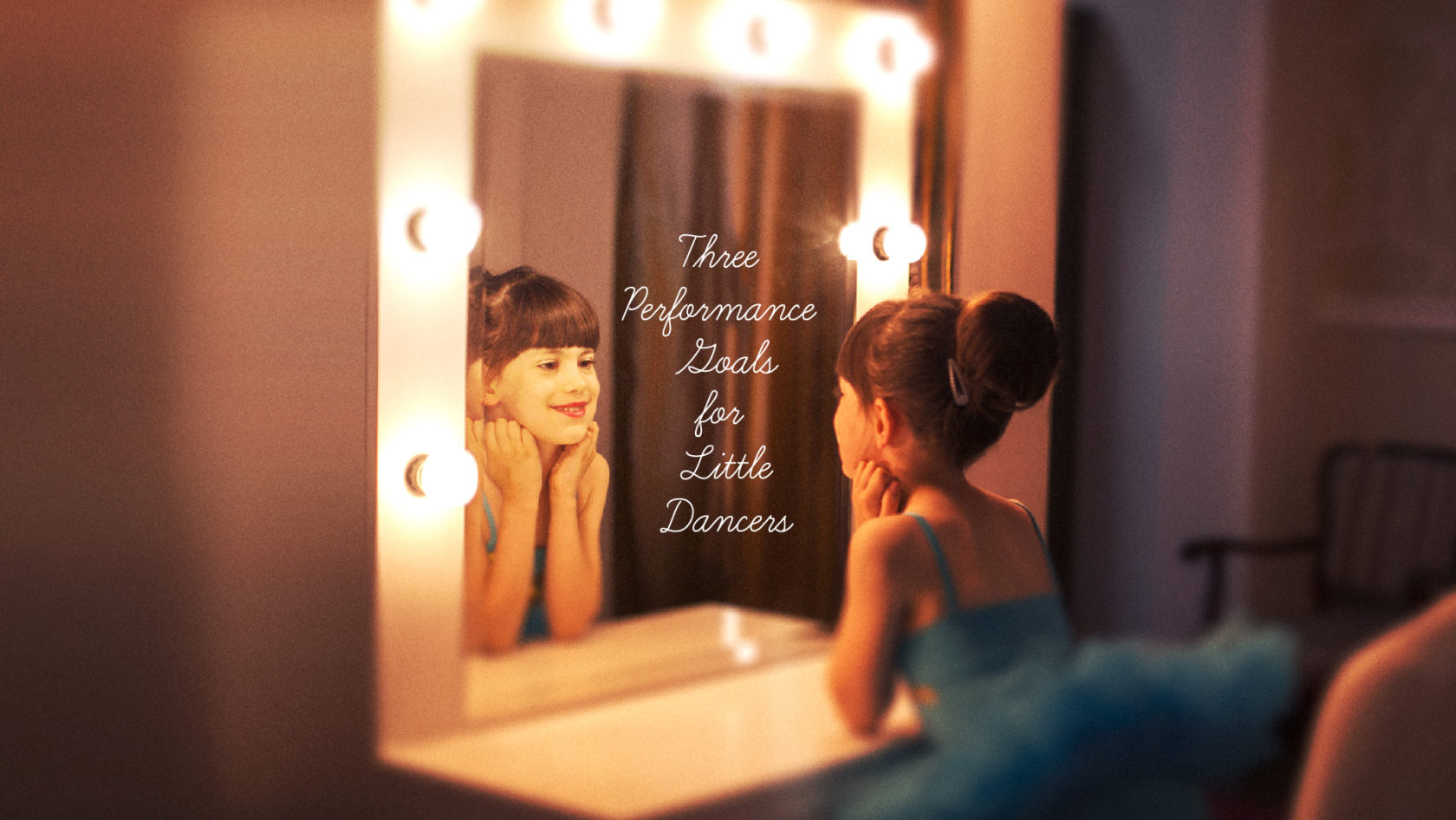Putting the youngest dancers on stage can be frightening. We never really know what is going to happen once they get out there. We can prepare them to the best of our ability and even send an assistant out there with them (or go out there ourselves!), but the unknown remains.
I have been teaching tiny humans ballet for a very long time, and what I have learned is that what happens on stage is not all that important. The experience the little ones have on stage? Now THAT is what matters.
Just because a dancer followed all the directions, stood on their spot, and performed every step to the best of their ability does not mean the stage experience was good. Likewise, just because a dancer forgot all the directions, was nowhere near their spot for the entirety of the dance, and replaced all choreography with rolling around on the ground does not mean the stage experience was bad.
To know what kind of experience the child had, we would need to ask them, and then believe them.
Of course, we all want students who actually do the dance and stand on their spots, and there are tactics that can help us achieve that; but that is another topic. For the time being, let’s put a pin in that and focus in on the kid and the goals they can reach.
Goal #1 Feel Proud
When all is said is done, we want these kids to feel pride in what they have accomplished. No matter what happens on stage, they are more than enough simply because they are who they are. This is a lesson performing can teach.
When we choose to redirect our attention to the amazing human in front of us, as opposed to the student who insists on running into the wings every 2 seconds, it becomes easy to recognize the strengths they have. This helps us encourage them in ways they personally understand. This will then feed their confidence which results in people who feel able to take the next step and do even better next time. Not do better because they were not good enough this time, but do better because being your best self every time feels good in that “I am so proud of the work I have done!” sort of way.
Goal #2 Have a Favorite and a Not Favorite
Being an artist means we must know ourselves. Being a well adjusted human means we must know ourselves. Basically, we all just need to really know ourselves. Encouraging young students to consider what their favorite part of performing is and what their least favorite part of performing is will lay the foundation for self awareness.
It is easy to focus only on the things students love because those are happy things. Those are the things we WANT to talk about. But the things they don’t love? Those are harder. They feel a bit sad. However, taking the time to help the students discover their dislikes, why they dislike those things, and what could make those things less unhappy for them offers so many opportunities for deep learning and growth. It also shows kids that it is safe and healthy to not love everything all the time.
Goal #3 Get That One Thing
Every student, no matter their age, will have one thing they desperately want to achieve in their performance. What that one thing is will vary from dancer to dancer. With the smallest of dancers, it is our job to choose that one thing for them and devise a plan to help them attain it.
Perhaps the dancer who demonstrates fear of going on stage would have a goal of getting on stage at all. Another dancer who cannot ever seem to stop talking might have the goal of remembering not to talk while on stage. Everyone has that one thing, and because it is challenging, yet attainable, everyone can say, “I did it! I did my one thing!”
Little dancers on stage can be scary for us teachers. But how delightful it is when we see them flourish and enjoy their artistic experiences! We can give them this journey by crafting appropriate goals and keeping our eyes fixed on the beauty of individuality.
Related Articles:


Comments
Rachael Ellis says
I learned something many years ago during my very first performance as a teacher. My little ones were so excited to go on stage, but after they danced they came to me in the wings and started crying… I will never forget asking the one who started everyone crying saying, “but they laughed at us!” She was heartbroken! I told her right then that they loved it so much that it made them laugh because they were so happy. It was too late though, the damage was done and it was not a good experience for her or most of the class. Every year since then I have made a point of having a discussion with the little ones at least a month before the performance and we repeat it every week. I ask them what they think the audience will do during their performance. We talk about what people do when they’re happy… They smile, they clap their hands, some people cry happy tears, and when they’re really really happy… Sometimes they laugh. If they laugh that means they really really loved it. I have not had any tears backstage ever since. In fact they come off the stage so excited that the audience laughed because that means they really really loved it! We have to prepare the little ones in advance so they have the best experience possible. I also teach them in the studio when they slip and fall down, real ballerinas just get up and keep dancing because the audience wants to get up and keep dancing.
Add Comment